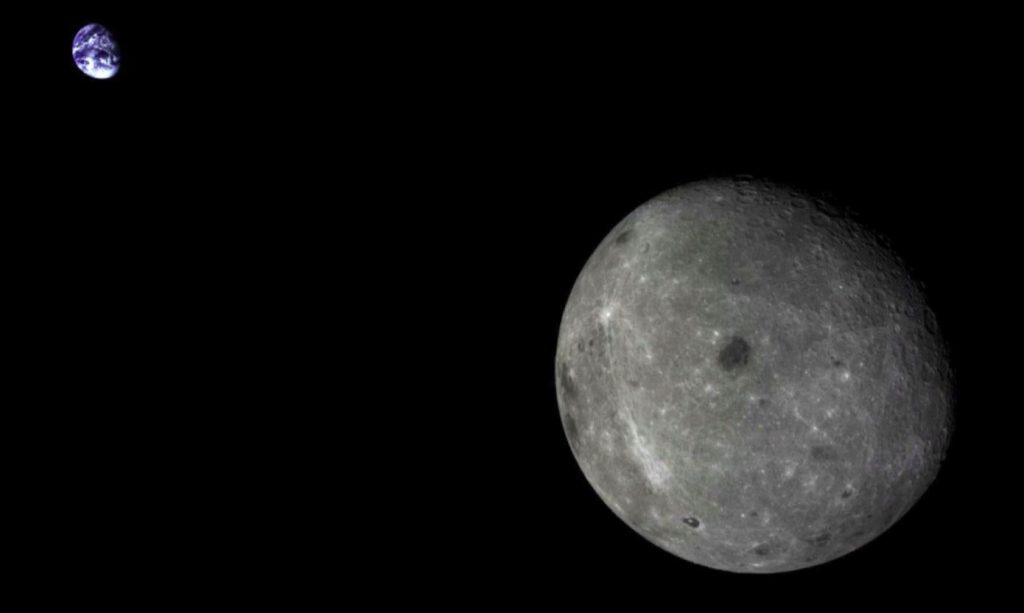HELSINKI — Data that tracks the movement of objects in space suggests that China is trying to save a spacecraft that was supposed to go to the moon but got stranded due to a problem with the rocket.
The small DRO-A and B spacecraft were sent into space from Xichang spaceport using a Long March 2C rocket on March 13. Shortly after, the Chinese state media Xinhua reported that the spacecraft did not reach their planned orbit because of an issue with the rocket’s upper stage called Yuanzheng-1S. first Chinese state media Xinhua reported that the rocket’s Yuanzheng-1S upper stage did not accurately place the spacecraft in their designated orbit.
Xinhua said, “The upper stage had a problem during the flight, causing the satellites to not enter the planned orbit accurately.” statedIt continued by saying, “The Xichang launch center is currently working to address the issue.”
Data from the U.S. Space Force’s 18th Space Defense Squadron (SDS) initially showed objects connected to the launch in low Earth orbit (LEO). However, further data sets showed that the spacecraft was in a highly-elliptical, high Earth orbit. The orbit has since been adjusted, and the spacecraft is now being tracked in a different orbit.
This shows that at least one satellite, and maybe both if they are still attached, separated from the upper stage, and their orbit has been moved to a different position.
Jonathan McDowell, a space activity tracker and astrophysicist, said, “We don’t have much information, but based on the tracking data, it seems that the payload(s) separated from the YZ stage and has tried to adjust its orbit in an attempt to save the mission.” SpaceNews.
Neither Chinese state media nor China’s space authorities mentioned that DRO-A and B were meant to go to the moon. However, a 2023 journal about navigation technology for satellites with the same name indicates that they were planned to enter a distant retrograde orbit (DRO) around the moon. The orbital data now confirm this. paper The DRO-A and B pair are designed to communicate from distant retrograde orbit with another satellite, named DRO-L, in LEO. The pair was sent into space on a Jielong-3 rocket in February. A DRO is a high lunar orbit that moves in the opposite direction to the moon’s rotation around Earth.
Destination: distant retrograde orbit
The DRO-A and B pair are designed to communicate with another satellite named DRO-L while in distant retrograde orbit. DRO-L was launched using a Jielong-3 rocket in February. launched China has not given any update on the DRO-A and B satellites. They might attempt to adjust their orbit during their closest approach to Earth, possibly raising their farthest point from Earth to the distance of the moon.
If successful, the spacecraft would then need to adjust its orbit again to enter the intended lunar orbit. It is not known how using extra propellant to raise the orbit will affect the mission.
We may hear an update on the mission if the satellite or satellites enter their planned lunar orbit. Currently, there is little information available about the mission, unlike the situation with Astrobotic’s Peregrine lander that experienced issues during its mission.
unlucky moon mission The DRO-A/B mission doesn't seem to be a crucial part of China’s moon plans and its failure wouldn't greatly affect the country’s exploration program. It's more of a technology and orbit-testing mission that could have a role in its.
bigger moon aspirations to create moon navigation and communication infrastructure to support moon exploration. It's also not the only new Chinese moon mission. The
moon communications relay satellite launched March 19 as a precursor to the Queqiao-2 moon far side sample return mission, set to launch in May. Chang’e-6 Two smaller satellites , called Tiandu-1 and Tiandu-2, were on the launch as pathfinders for broaderQueqiao constellation Tracking data suggests China is trying to salvage spacecraft initially meant for the moon but left stranded by a rocket stage malfunction. plans.









